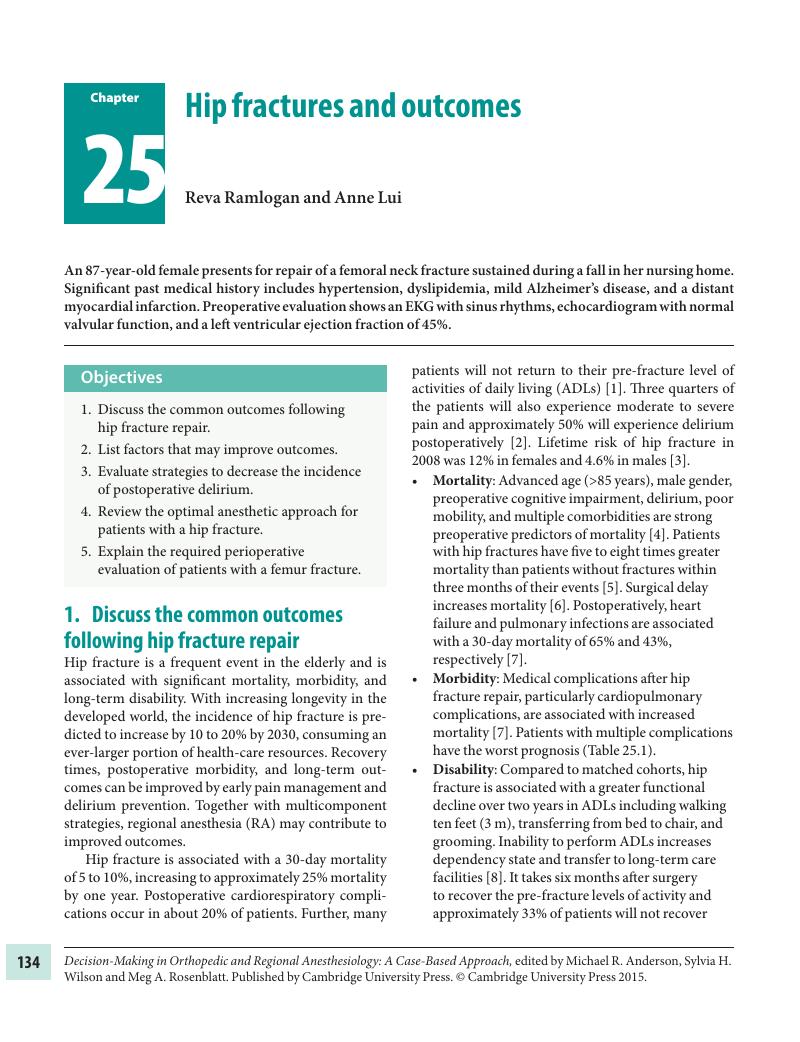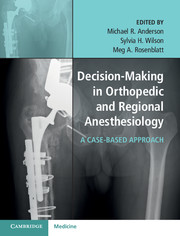Book contents
- Decision-Making in Orthopedic and Regional AnesthesiologyA Case-Based Approach
- Decision-Making in Orthopedic and Regional Anesthesiology
- Copyright page
- Contents
- List of contributors
- Preface
- Section 1 General considerations in regional anesthesia
- Section 2 Special patient considerations
- Section 3 Total joint replacements
- Section 4 Orthopedic trauma
- Chapter 24 Orthopedic trauma and compartment syndrome
- Chapter 25 Hip fractures and outcomes
- Chapter 26 Rib fractures: a review of truncal blocks
- Chapter 27 Humerus fractures
- Chapter 28 Ankle fracture
- Chapter 29 Amputation: acute and chronic pain considerations
- Section 5 Sports medicine and hand surgery
- Index
- References
Chapter 25 - Hip fractures and outcomes
from Section 4 - Orthopedic trauma
Published online by Cambridge University Press: 05 October 2015
- Decision-Making in Orthopedic and Regional AnesthesiologyA Case-Based Approach
- Decision-Making in Orthopedic and Regional Anesthesiology
- Copyright page
- Contents
- List of contributors
- Preface
- Section 1 General considerations in regional anesthesia
- Section 2 Special patient considerations
- Section 3 Total joint replacements
- Section 4 Orthopedic trauma
- Chapter 24 Orthopedic trauma and compartment syndrome
- Chapter 25 Hip fractures and outcomes
- Chapter 26 Rib fractures: a review of truncal blocks
- Chapter 27 Humerus fractures
- Chapter 28 Ankle fracture
- Chapter 29 Amputation: acute and chronic pain considerations
- Section 5 Sports medicine and hand surgery
- Index
- References
Summary

- Type
- Chapter
- Information
- Decision-Making in Orthopedic and Regional AnesthesiologyA Case-Based Approach, pp. 134 - 139Publisher: Cambridge University PressPrint publication year: 2015

